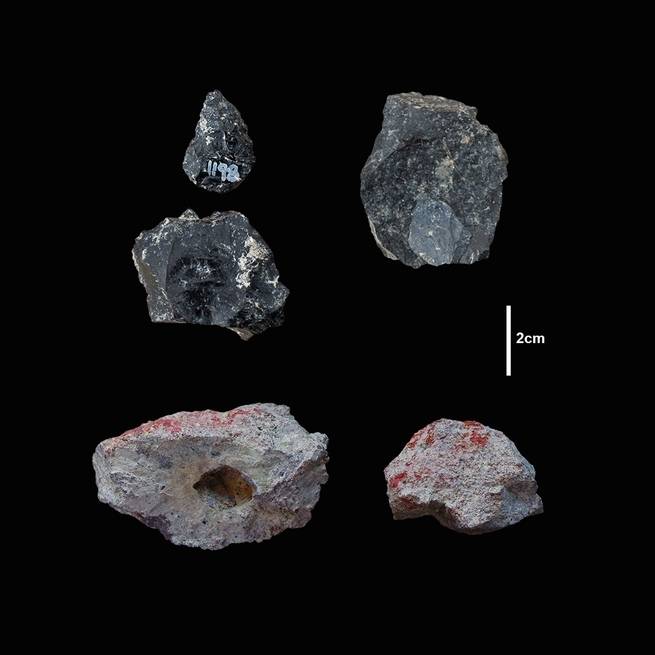A world-historical theory of tool use

I love reading and rereading about the origin of humanity. I love that it’s not settled science: we’re still making new discoveries about when humans first left Africa, how and when we interbred with other hominins, and what makes us human in the first place. It’s just the coolest story, which is also every story.
Popular Science has a really nice new primer on the current state of research on early humanity. Embedded in it is a series of studies on tool use by early humans in Kenya that caught my attention. Basically, the tools got smaller and more portable, the materials used were more exotic (sourced from farther away), and they were decorated with pigments.
“That’s where there’s a similarity to technology in recent times; things start out big and clunky and they get small and portable,” says Richard Potts, head of the Smithsonian’s Human Origins Program and a co-author of the papers. “The history [of] technology has been the same ever since.”
I wonder, though, if all three vectors hold up across history: greater portability, greater range of materials, and greater decorative value.
I suspect the null hypothesis would be that technologies that work tend to stay roughly the same over time. (For most of early human history, our tools didn’t change up that much, which is exactly why the burst of activity in east Africa is noteworthy.) You need something to shake things up: either sudden availability of new materials, or a deprivation of old ones (like the Bronze Age collapse, which eventually helped usher in the Iron Age).
As it turns out, that’s exactly what happened.
“One of the things we see is that around 500,000 years ago in the rift valley of southern Kenya, all hell breaks loose. There’s faulting that occurs, and earthquake activity was moving the landscape up and down. The climate record shows there is a stronger degree of oscillation between wet and dry. That would have disrupted the predictability of food and water, for those early people,” Potts says. “It’s exactly under those conditions that almost any organism—but especially a hunter-gatherer human, even an early one—would begin to expand geography of obtaining food or obtaining resources. It’s under those conditions that you begin to run into other groups of hominins and you become aware of resources beyond your usual boundaries.”





Stay Connected